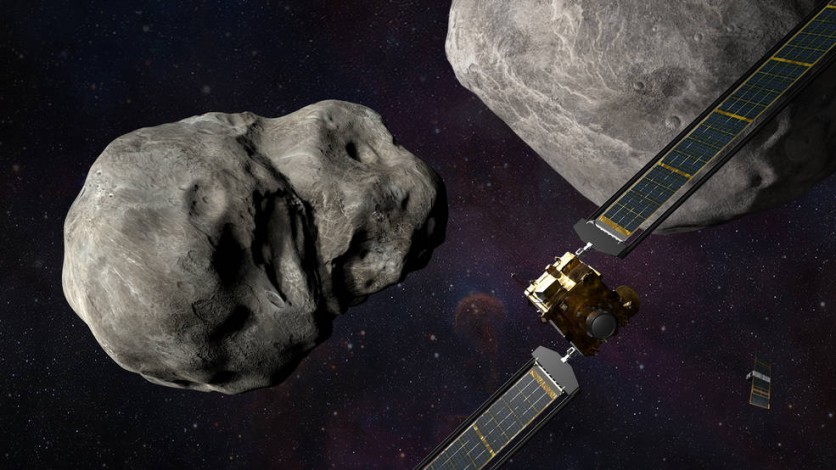NASA will finally go toe-to-toe with an asteroid next week to test its planetary defense system!
On Sept. 27, the agency's Double Asteroid Redirection Test (DART) mission will fly toward the asteroid moonlet Dimorphos in an attempt to alter its orbit around its parent body, the asteroid Didymos.

Live on NASA TV
As reported first by Space.com, this will entail a level of coordination never previously witnessed in a live broadcast from space before.
Images from DART's DRACO (Didymos Reconnaissance and Asteroid Camera for Optical Navigation) instrument, the only scientific instrument the spacecraft carries, will be featured on the broadcast.
One image will be transmitted back to Earth every second, and we can view it live on NASA Television. The actual show, according to officials, will begin approximately two minutes before impact when the asteroid starts to block the camera's vision.
Engineers can't technically direct DART by hand because Earth will be approximately seven million miles (11 million km) from the asteroid duo upon impact. Instead, SMART Nav will autonomously direct the spaceship to the asteroid and prepare the systems for the major collision.
Without any human guidance, the spaceship is expected to navigate the final four hours of its journey. DRACO will help the spacecraft discover its target and correct its trajectory.
Read also : Will NASA Cooperate With China For the Moon Landing Location? Here's What Chief Nelson Gas Says
Kinetic Impact Technology
Despite not being on a collision trajectory with Earth, Dimorphos is being sent to test if "kinetic impact technology" can divert any possible asteroids that may be headed that way.
On November 24, 2021, a SpaceX Falcon 9 rocket carried out the mission's launch. DART has now logged about 6.8 million miles (11 million kilometers) of travel to the binary asteroid system Didymos.
Didymos, the larger asteroid, has a diameter of 2,525 feet (780 meters), whereas Dimorphos, the smaller "moonlet" asteroid, has a diameter of 525 feet (160 meters).
As a point of reference, the asteroid that violently burst over Chelyabinsk, Russia, in 2013 had a diameter of 60 feet (18 meters), according to Space.com.
Targeting a binary system was a deliberate decision. We'll soon be able to determine whether the impact of the DART spacecraft changed the orbit of Dimorphos since the two asteroids rotate around one another and can both be seen through telescopes on Earth.
During the display, a little cubesat called LICIACube that was launched with DART will be capturing pictures of its own, keeping a safe distance away from the impact site. The next days should see the transmission of that video back to Earth.
NASA will also use a network of ground telescopes to monitor the impact, and officials promised to make that information available as soon as possible. However, it can take a few weeks before all the information is released since the space agency must first determine whether Dimorphos' orbit has changed.
Related Article : NASA's James Webb Space Telescope Zooms in on Mars for the First Time, Capturing Stiking Martian Details!
This article is owned by Tech Times
Written by Joaquin Victor Tacla
ⓒ 2025 TECHTIMES.com All rights reserved. Do not reproduce without permission.




